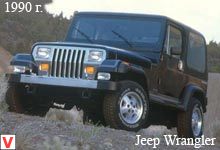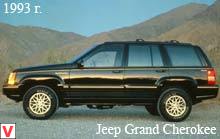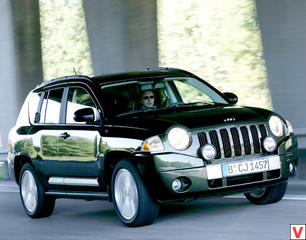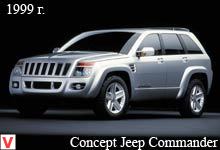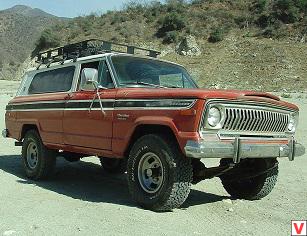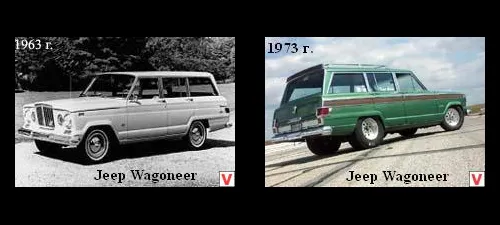
The development of the SUV market, which began in the mid-1950s, coincided with the start of the development of promising 4 × 4 vehicles by Jeep. The result of this program was the appearance in the autumn of 1962 of a new station wagon Jeep Wagoneer, significantly different from previously produced cars of this type. This model was equipped with both full and only rear wheel drive.
Its predecessor was Willys Jeep Wagon, and similar machines were the Jeep Gladiator and Jeep Honcho. From 1963 to 1991, full-size Jeep Wagoneer SJs were produced, and from 1984, compact SUVs, which later became the Jeep Cherokee XJ and Jeep Grand Cherokee ZJ, were produced. The manufacturers of these cars were successively Willys Motors, its parent company Kaiser-Jeep (1960s), American Motors Corporation (1987-1970) and Chrysler Corporation (1987-1993). The plant was located in Toledo (Ohio).
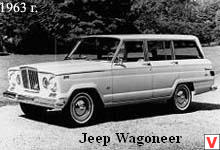
Wagoneer had a frame and was produced with three types of bodies: a 2-door truck (truck) based on a Jeep Gladiator pickup, a 2- and 4-door SUV. At the base of the structure was the Jeep SJ platform. Machine dimensions were 4730/1900/1690 mm with a wheelbase of 2761 mm.
Vehicle curb weight reached 2048 kg. In contrast to the first, rather “Spartan”, Land Rover, focused mainly on cargo transportation, the Wagoneer deservedly positioned itself as a luxury SUV, especially since its debut took place 7 years before the appearance of the Range Rover. The equipment included a height-adjustable steering column, air conditioning, a radio and interior lighting. The SUV was equipped with 6-cylinder in-line carbureted engines of 3.8 l Tornado (140 hp, since 1964 - 133 hp), 4.2 l AMS (since 1979), and also V8 5.4 l Vigilante (250 hp, 460 Nm), 5.7 L Buick Dauntless (230 hp, 470 Nm), 5.9 L and 6.6 L AMC.
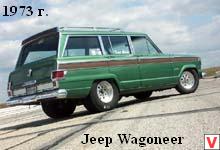
The consumption of AI-92 gasoline in a car with a 4.2-liter engine on the highway was 9.4 liters, and in the urban cycle it was 13 liters per 100 km of track. The engines are aggregated with 3- and 4-speed manual transmissions or 3-speed automatic transmissions GM THM400 and Chrysler A727. In 1968, the production of rear-wheel drive versions was discontinued. In 1970, the body insulation was improved and the power units were replaced with the new 5.9 and 6.6 liters.
In 1973, the four-wheel drive became permanent, and in 1974 the assembly of 2-door versions (Cherokee) began again. Wagoneer moved into the category of "family" jeeps, its equipment has become richer: there were electric front seats, electric windows, cruise control, leather upholstery, plush carpets and inserts "under the tree" on the doors. In 1983, the Selec-Trac automatic transmission began to be supplied as standard in the car. Despite the fact that the production of new Jeep on the XJ platform began in 1984, it was decided to continue the production of the popular Wagoneer SJ, which received the “Grand” prefix.
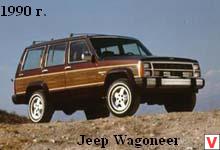
There was also a somewhat simplified, and therefore less expensive, option for custom configuration of the passenger compartment, which did not have pseudo-wooden panels in the interior design and with conventional stamped rims. In 1986, the dashboard, grille and optics were slightly modified. A year later, the ownership of the company was transferred to Chrysler Corporation, which in subsequent years continued to release Wagoneer, practically without changing anything in it. In particular, there was a rear window cleaner and new body colors. Jeep Wagoneer was one of the first cars in the sport utility vehicle (SUV) class; for 28 years, it was produced without significant changes.
The use of an independent front suspension, power steering and automatic transmission in the construction of a utilitarian vehicle made this SUV almost epoch-making. In 1991, the production of the Wagoneer was completed.
